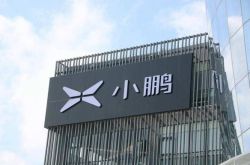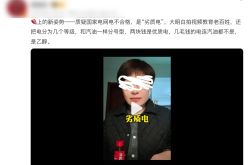Lingyiwanwu Dilemma: Talent Exodus, Capital Strain, Navigating the Big Model Game
![]() 05/14 2025
05/14 2025
![]() 617
617
In the fiercely competitive realm of AI, shifts in corporate leadership often reverberate profoundly, and Lingyiwanwu has recently found itself caught in such a tumultuous whirlpool.
Recently, news broke that Dai Zonghong, co-founder and vice president of technology at Lingyiwanwu, has departed to venture into his own business. This expert, distinguished by his profound achievements in large model infrastructure, boasts a wealth of experience from Huawei Cloud and Alibaba DAMO Academy. At Lingyiwanwu, he spearheaded the rapid construction of critical facilities, including a 1,000-card GPU cluster. His departure marks a significant loss for the company.
This is not an isolated incident. Since the second half of 2024, several co-founders and early core members, including Li Xiangang, Huang Wenhao, Pan Xin, and Cao Dapeng, have also left the company. In the AI industry, core talent is paramount for building technological barriers and capturing market highlands. The mass exodus of executives at Lingyiwanwu inevitably fuels speculation about whether it stems from irreconcilable internal strategic differences or capital chain pressures clouding its development prospects.
Retreat from Turbulence and Internal Overhaul
The密集 departure of executives from Lingyiwanwu is no coincidence but the result of hindrances in AI application business exploration and model development, prompting significant internal adjustments.
On one hand, Lingyiwanwu struggles with product positioning, market demand comprehension, and competitive response, making it challenging to establish a foothold in the fiercely competitive consumer market.
Lingyiwanwu has encountered substantial obstacles in its AI application business endeavors. Initially, the company attempted to launch multiple consumer-oriented products, such as PopAi and Mona. However, aside from ROI, most products failed to meet expectations and were subsequently shut down, maintained, or merged.
Regarding model progress, Lingyiwanwu also missed a crucial opportunity. Due to misjudgments in the technology roadmap, it failed to timely adopt the MoE (Mixture of Experts) architecture that later became mainstream. Its new flagship large model, Yi-Lightning, arrived late and struggled to compete with high-performance models like ByteDance's Doubao and DeepSeek's V2, gradually falling behind in the model competition.
On the other hand, facing the dual dilemma of business and models, Lingyiwanwu initiated a strategic adjustment akin to amputating a limb to survive. In mid-December 2024, Lingyiwanwu laid off its pre-training algorithm team and Infra team, which were subsequently integrated into Alibaba's Tongyi and intelligent cloud team.
Simultaneously, Lingyiwanwu made substantial adjustments to its business layout.
Firstly, it bolstered investment in promising ventures by increasing resource allocation. Secondly, it facilitated independent financing for potential projects, such as planning to spin off the digital human business led by Yang Changpeng, the head of digital human business R&D. This move aims to enhance the business's viability and development space through independent operation and self-financing. Thirdly, it chose to terminate projects with no foreseeable prospects to avoid further resource wastage.
In fact, Lingyiwanwu's internal overhaul is not unique. The AI industry is evolving rapidly, characterized by swift technological iteration and fierce market competition. Many AI startups confront pressures related to funding, technology, talent, and market during their development. In this invisible war, enterprises must maintain acute market insight, accurately grasp technology trends, and allocate resources reasonably at all times.
Diversified Layout, Seeking Change and Stability
By separating different businesses into independent operations, Lingyiwanwu aims to achieve autonomous growth and profitability for each business segment, thereby enhancing the company's overall competitiveness.
It is undeniable that in the highly competitive AI market, a singular business model often struggles to withstand market risks, whereas a diversified layout can disperse risks and open up broader profit margins. Taking the spin-off of the digital human business as an example, under the leadership of professional R&D head Yang Changpeng, it is expected to delve deeply into the digital human domain and unlock the business's potential value through independent financing.
However, while the vision is ambitious, the reality is fraught with challenges, and the path to a diversified layout is not without obstacles.
Firstly, post-business split, the seamless flow of information, capital, and talent within the same system is disrupted, and coordination between different business segments becomes complex, significantly increasing communication costs. In Lingyiwanwu's business structure, if the digital human business needs to share certain underlying technologies or data resources with other ventures, it may lead to conflicts and coordination difficulties in resource allocation due to independent accounting and differing development priorities across business segments.
Secondly, allocating resources to multiple independently operated business segments poses a significant test for Lingyiwanwu's resource allocation capabilities. Each business strives to secure sufficient funds, technical talent, and marketing resources for rapid growth. However, the company's total resources are limited, and fairly and reasonably distributing them among multiple ventures becomes a thorny issue.
Thirdly, the AI industry's competitive landscape is already intense, and Lingyiwanwu's diversified layout exposes it to direct competition with rivals in multiple sub-sectors. In the digital human business realm, it must not only contend with powerful products launched by giants like Baidu and ByteDance, which rely on robust technical prowess and vast data, but also navigate the differentiated competitive strategies of numerous emerging startups. In the nascent stages of independent operation, Lingyiwanwu's digital human business is destined to struggle for survival and growth in a confined space.
In truth, many AI enterprises have attempted to bolster their competitiveness by expanding their business boundaries during their development, yet few have succeeded. The AI industry witnesses rapid technological upgrades and complex, ever-evolving market demands. When enterprises embark on diversified layouts, they must possess strong technical reserves, sufficient financial backing, exceptional management capabilities, and acute market insight.
In summary, Lingyiwanwu's strategy of achieving a diversified layout through business splits is a bold endeavor to seek change and stability amidst the fierce competition in the AI industry. However, this path is fraught with difficulties and confronts numerous realistic challenges.
Major Exam Looming, Navigating the Path Forward
In 2025, competition in the field of artificial intelligence has intensified, with the race entering a crucial second half, and a new round of elimination has commenced. Large corporations continue to expand with resource advantages, and AI unicorns are showcasing their unique strengths. Can Lingyiwanwu successfully navigate this critical exam?
On the AI competition stage, the presence of large corporations is becoming increasingly prominent. Lingyiwanwu appears somewhat overwhelmed amidst this carnival of giants. ByteDance, Baidu, Tencent, and other large corporations are also vying for supremacy. Relying on massive data, top talent, and substantial funds, they continue to launch new models, expand new applications, and establish comprehensive layouts from underlying technologies to upper-level applications, erecting high barriers in various sub-sectors and compressing the survival space for startups.
Apart from large corporations, Lingyiwanwu also faces stiff competition from other AI unicorns. Enterprises such as Zhipu AI and MiniMax, which are also part of the "Six Little Tigers" in the large model field, are also actively exploring avenues for breakthrough.
Zhipu AI has a clear ToB positioning and strengthens collaboration with terminal manufacturers through AutoGLM, delving deeply into the enterprise service market. Baichuan Intelligence has pivoted early to the medical vertical, avoiding the red ocean competition of general large models and focusing on refining model applications in specialized fields. Dark Side of the Moon and Minimax concentrate on ToC scenarios, with products like Kimi Chat and Conch AI striving to attract users and accumulate positive word-of-mouth in the consumer market.
Faced with internal and external challenges, Lingyiwanwu is not idle but actively exploring ways to break the deadlock. It decisively adjusted its strategy, withdrawing from the costly race of training ultra-large parameter models, instead focusing on training small-parameter, cost-effective models, and enhancing application layer implementation.
Crucially, Lingyiwanwu has forged a strategic partnership with Alibaba Cloud to establish the "Industry Large Model Joint Laboratory." By leveraging Alibaba Cloud's platform service capabilities and the general attributes of the Tongyi series of large models, it aims to enhance the cost-effectiveness of its model capabilities, hoping to efficiently reach more enterprise-level customers and increase revenue scale.
In conclusion, Lingyiwanwu stands at the epicenter of the AI elimination race storm, with the resource advantages of large corporations, competition from unicorns, and the business model dilemma as three significant burdens. In the future, Lingyiwanwu must possess the resolve to burn its bridges and carve out a differentiated path suited to its development to stand a chance of surviving this critical exam and ushering in its own dawn.





